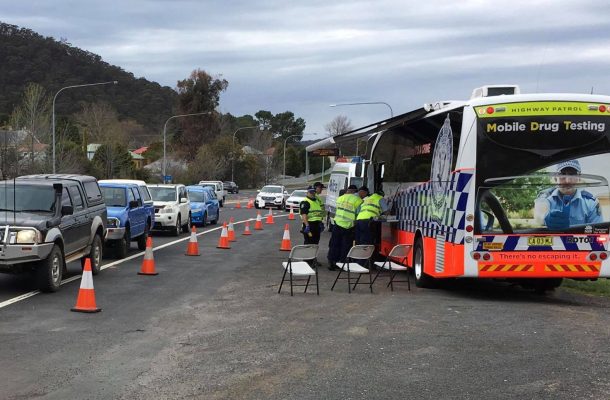How reliable are roadside drug tests?

New research conducted by the Lambert Initiative for Cannabinoid Therapeutics at the University of Sydney calls into question the reliability of the two devices that are currently being used for mobile drug testing (MDT) in NSW and other Australian states. These devices were used in the prosecution of almost 10,000 cannabis users for drug driving in NSW in 2016 (the last year for which data are available).
The study, published in the journal Drug Testing and Analysis, found that the devices frequently failed to detect high concentrations of tetrahydrocannabinol (THC) – (false negative rates were 9 percent and 16 percent for the two devices) but also sometimes gave a positive result when saliva THC concentrations were very low or negligible (false positive rate of 5 percent and 10 percent).
“Detecting impairment due to cannabis use is an important goal in promoting road safety but using saliva tests to do this appears fraught with issues,” said Professor Iain McGregor, Academic Director of the Lambert Initiative for Cannabinoid Therapeutics and senior author of the study.
The study, led by PhD student Thomas Arkell, was part of a larger study looking at the effects of vaporised cannabis on driving.
In the same way that breathalysers can detect whether a driver has a blood alcohol concentration of more than 0.05 percent, these devices are meant to detect whether a driver has more than a certain defined amount of THC in their saliva. If so, then the test should come back positive. THC is the principal psychoactive constituent of cannabis.
Study participants were occasional cannabis users who consumed two different types of cannabis or placebo cannabis on three separate test days. Participants had their saliva tested at baseline and at regular intervals after cannabis consumption using the Securetec DrugWipe and the Draeger DrugTest 5000 – the same types of devices that are in use around Australia for MDT.
The study tested 14 participants on two devices where the participants had vaporised placebo cannabis, THC-dominant cannabis, or cannabis containing equivalent concentrations of THC and the non-intoxicating cannabinoid CBD (cannabidiol). The tests were conducted at four different timepoints. In all, there were more than 300 separate tests taken. Participants were also tested for driving performance on a state-of-the-art driving simulator.
As well as using the two MDT test devices, the researchers collected separate saliva samples in order to measure exactly how much THC was in each participant’s saliva at the time of each test. This “confirmatory” test used a highly accurate laboratory mass spectrometer.
“What we found was that these test results often came back positive when they should have been negative, or conversely that they came back negative when they should have actually been positive,” Mr Arkell said.
The study also found that measures of accuracy, specificity and sensitivity of the two devices fell below the levels recommended by EU authorities.
The rationale for mobile drug testing is based on the success of the RBT program pioneered in Australia. But while there is a very clear link between alcohol intake, blood alcohol content measured in a breathalyser, and intoxication, THC levels in saliva do not reliably reflect cannabis intake or intoxication.
“We should instead be focusing on developing novel methods for detecting drivers who are actually impaired by cannabis. The two devices used by police in MDT were never designed to measure impairment. Authorities in other jurisdictions, such as Canada, remain far more cautious in their use of such devices,” Professor McGregor said.
Professor McGregor said that when people use THC capsules or suppositories, neither of which leave traces of THC in the oral cavity, users have zero THC in their saliva, but can be heavily intoxicated. Additionally, people tested in this study would often feel too impaired to drive two hours after vaporising cannabis but would give a negative saliva test with the two devices.
Conversely other people in the study presented with negligible levels of THC in their saliva, and no driving impairment, but tested positive with the MDT devices at the detection thresholds used in the study.
There is also the issue of passive smoking, Professor McGregor said, that at least two overseas studies had shown that people passively exposed to the cannabis smoke of others can exhibit salivary levels of THC that would generate a positive test result.
The number of mobile drug tests being conducted each year continues to rise, with NSW Police planning to conduct 200,000 of these tests in 2020.
Study lead Mr Arkell said: “Given that these tests can cost at least $40 each – and potentially lead to serious life-changing penalties for drivers – it is imperative that these concerns around reliability and accuracy are addressed.
Open Forum is a policy discussion website produced by Global Access Partners – Australia’s Institute for Active Policy. We welcome contributions and invite you to submit a blog to the editor and follow us on Twitter, Facebook, Linkedin and Mastadon.










